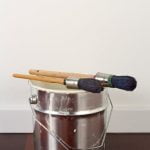Are you asking yourself, “How can I improve cell phone reception in my home?” Many of us rely on our cell phones for work, staying connected with loved ones, and accessing important information. However, poor reception at home can be frustrating and inconvenient.
In this article, we will explore various strategies for improving cell phone reception within your home. Whether you live in a rural area or a densely populated city, there are steps you can take to enhance your cellular signal.
Having good cell phone reception at home is essential for staying connected and productive. It allows us to make clear calls, send texts without delays, and access the internet seamlessly.
If you have experienced dropped calls or struggled to hear others while on the phone, you understand the frustration that comes with poor cell reception. By sharing personal experiences or anecdotes related to this common issue, we hope to connect with readers who have also faced challenges with their home’s cellular signal.
In the following sections of this article, we will address the factors that affect cell phone reception and provide tips for identifying specific issues in your home. We will also discuss choosing the right cell phone carrier for optimal coverage in your area, utilizing Wi-Fi calling and texting as solutions for poor reception, installing a signal booster, optimizing cell phone settings, reducing interference from household electronics, and seeking professional help when necessary.
Whether you live in a remote location or an urban environment with network congestion, these strategies can help improve your cell phone reception at home.
Understanding the Factors Affecting Cell Phone Reception
When it comes to cell phone reception, understanding the factors that can impact it is essential for identifying solutions to improve signal strength. Several elements can affect cell phone reception in a home, including the location, building materials, and distance from cell towers. Identifying these specific factors can help you determine the best course of action for improving your cell phone reception.
Here are some key points to consider when understanding the factors affecting cell phone reception:
- Location: Your geographical location plays a significant role in determining the quality of your cell phone reception. Certain areas may have stronger or weaker signals depending on their proximity to cell towers and natural obstructions.
- Building materials: The materials used in your home can also impact cell phone reception. Metal, concrete, and other dense building materials can weaken signals, while open spaces and glass windows may allow for better reception.
- Distance from cell towers: The distance between your home and the nearest cell tower can affect your signal strength. Those living in rural areas or far from urban centers may experience weaker signals due to this distance factor.
By recognizing these factors and their potential impact on your cell phone reception, you can begin to explore solutions for improving the signal strength within your home. Whether it’s through carrier selection, technological enhancements, or simple adjustments to settings and positioning within your home, understanding these factors is key to achieving better cell phone reception.
Choosing the Right Cell Phone Carrier
When it comes to improving cell phone reception at home, one of the most crucial factors to consider is the choice of cell phone carrier. Different carriers offer varying coverage and network quality, so selecting the right one for your location can make a significant difference in reception reliability.
Researching and selecting the best cell phone carrier for your area requires some effort but can ultimately lead to a more satisfying user experience. One important step is to check coverage maps provided by different carriers to see which ones offer the best service in your neighborhood. It’s also beneficial to ask friends or neighbors about their experiences with different carriers in terms of call quality and data speeds.
Additionally, it’s essential to consider not only the coverage within your home but also in areas where you frequently travel or spend time. This includes your workplace, places you visit often, and any other specific locations where reliable cell phone reception is important to you. Ensuring that your chosen carrier has strong coverage in these areas will help guarantee consistent connectivity wherever you go.
Furthermore, take advantage of trial periods offered by many carriers to test out their service before committing to a long-term contract. This allows you to determine actual signal strength and call quality within your home and other frequented locations before making a final decision on which carrier is best for you.
Utilizing Wi-Fi Calling and Texting
In areas with poor cell phone reception, utilizing Wi-Fi calling and texting can significantly improve the ability to stay connected. Wi-Fi calling allows users to make phone calls over a wireless internet connection instead of relying solely on a cellular network. This is particularly useful in buildings with thick walls or in rural areas where the distance from cell towers impacts signal strength.
To set up Wi-Fi calling on your smartphone, first check if your device and carrier support this feature. Most modern smartphones offer Wi-Fi calling capabilities, but it’s essential to confirm compatibility with your specific carrier. Once confirmed, enable Wi-Fi calling in your phone’s settings and follow any additional instructions provided by your carrier. After setup, your phone will automatically switch to Wi-Fi calling when it detects a strong wireless internet connection.
Similarly, Wi-Fi texting allows users to send and receive text messages over a Wi-Fi network instead of using a cellular connection. This can be an effective solution for maintaining communication when traditional text messages may not go through due to poor reception.
Using these features not only improves call and text reliability but also helps avoid excessive data usage or roaming charges. By leveraging a stable internet connection at home, users can ensure seamless communication regardless of their home’s cellular signal strength.
| Wi-Fi Calling | Wi-Fi Texting |
|---|---|
| Improves call reliability | Enhances text message reliability |
| Avoids excessive data usage or roaming charges | Relies on stable home internet connection |
Installing a Signal Booster
If you’ve tried adjusting your cell phone settings and still struggling with poor reception at home, it may be time to consider installing a signal booster. Signal boosters work by amplifying the existing cell phone signal, providing a stronger and more reliable connection for calls, texts, and data usage. Here are some steps to consider when installing a signal booster:
- Research and select the right signal booster for your home: There are various signal booster products available on the market, so it’s important to choose one that is compatible with your specific cell phone carrier and addresses the coverage area you need to boost.
- Find the optimal location for the external antenna: The external antenna of the signal booster should be placed in an area where it can pick up the strongest possible cell phone signal from outside. This may require some experimentation with different locations on your property.
- Install the internal antenna in a central location: The internal antenna of the signal booster should be installed in a central area of your home to ensure that the boosted signal reaches all areas. This may involve running cables through walls or ceilings to ensure proper placement.
By following these steps and carefully installing a signal booster, you can significantly improve cell phone reception within your home. However, if you encounter any challenges during installation or have specific questions about selecting the right product for your needs, it’s advisable to seek professional assistance or consult with your cell phone carrier for guidance. With an effective signal booster in place, you can enjoy clear calls and reliable connectivity throughout your home.
Optimizing Cell Phone Settings
When faced with poor cell phone reception at home, it’s important to consider optimizing the settings on your smartphone as a potential solution. Adjusting certain settings can help improve signal strength and overall connectivity, providing a better experience for making calls, sending texts, and using data.
Adjusting Network Mode and Roaming
One way to optimize your cell phone settings is by adjusting the network mode and roaming options on your device. In areas where the signal is weak, switching the network mode from 4G or LTE to 3G can sometimes result in better reception. Additionally, enabling roaming on your device may allow it to connect to other networks in the area if your primary carrier’s signal is weak.
Managing Data Usage
Another factor that can impact cell phone reception is excessive data usage. If you notice that your signal tends to weaken when streaming video or using data-heavy applications, consider monitoring and managing your data usage. By setting limits on background data usage or prioritizing Wi-Fi connections for data-intensive activities, you may be able to improve reception in areas with poor signal strength.
Using Airplane Mode and Wi-Fi Calling
In situations where traditional cellular signals are weak, utilizing airplane mode along with Wi-Fi calling can be an effective strategy. Activating airplane mode disables cellular connectivity while still allowing Wi-Fi connections. This allows you to make calls and send texts over a Wi-Fi network, which can often provide better quality and reliability than a weak cellular signal.
By taking these steps to optimize the settings on your smartphone, you may be able to improve your cell phone reception at home without needing additional equipment or professional assistance. Remember that the specific steps for adjusting these settings may vary depending on the make and model of your smartphone, so consult the user manual or contact your device’s manufacturer for detailed instructions tailored to your device.
Reducing Interference
In some cases, household electronics and appliances can disrupt cell phone signals, leading to poor reception within the home. Common culprits for interference include cordless phones, microwaves, baby monitors, and even metal objects such as refrigerators or filing cabinets. To address this issue, it is important for individuals to identify which devices or materials might be causing interference with their cell phone signals.
One way to reduce interference is by rearranging furniture and electronic devices within the home. By creating more space between the cell phone and potential sources of interference, individuals can minimize disruptions to their signals. Additionally, positioning electronics away from areas where calls are frequently made can help improve reception quality.
Another option for reducing interference is to make use of shielded cables for electronic devices that may cause disruptions in cell phone signals. Shielded cables are designed to minimize electromagnetic interference and can be a simple yet effective solution for improving cell phone reception at home.
Finally, homeowners who continue to experience significant interference despite making adjustments on their own may want to consider consulting with a professional. There are experts who specialize in identifying and addressing issues related to signal interference in residential spaces, offering further support for those seeking improved cell phone reception within their homes.
| Factors | Steps |
|---|---|
| Rearrange furniture/electronics | Create space between the phone and potential sources of interference; position electronics away from areas where calls are frequently made. |
| Use shielded cables | Minimize electromagnetic interference by using shielded cables for electronic devices. |
| Consult with a professional | If all else fails, seek assistance from an expert in identifying and addressing signal interference issues. |
Seeking Professional Help
While the aforementioned tips and techniques can significantly enhance cell phone reception at home, there may be instances where professional assistance is necessary to address persistent issues. If you have tried various methods to improve cell phone reception in your home without success, it may be time to seek help from your cell phone carrier or a professional technician.
One option is to contact your cell phone carrier and communicate the problems you have been experiencing with reception. Customer service representatives can often provide troubleshooting guidance and support, as well as check for any network issues in your area. In some cases, they may offer solutions or recommend specific products or services to improve signal strength.
If the issues with cell phone reception persist despite efforts to resolve them on your own or with the assistance of your carrier, it may be beneficial to enlist the help of a professional technician. These individuals specialize in assessing and resolving complex connectivity issues, including those related to poor cell phone reception.
A technician can conduct a thorough analysis of the factors affecting signal strength in your home and recommend appropriate solutions, such as installing specialized equipment or making adjustments to optimize reception.
Conclusion
In conclusion, having reliable cell phone reception at home is essential for staying connected and accessible. By understanding the factors that affect signal strength, choosing the right carrier, utilizing Wi-Fi calling and texting, installing a signal booster, optimizing cell phone settings, reducing interference, and seeking professional help when needed, individuals can take proactive steps to improve their cell phone reception.
It is important for readers to keep in mind that no single solution may work for everyone, as each home environment and location varies. Therefore, it may require some trial-and-error to find the most effective strategy for improving cell phone reception. However, by being proactive and exploring the various options outlined in this article, individuals can significantly enhance their ability to stay connected through their mobile devices while at home.
Ultimately, taking action to improve cell phone reception at home can lead to better communication with friends and family, greater convenience for remote work or telecommuting, and peace of mind knowing that emergency calls can be made without interruption. It is worth the effort to explore the tips and solutions provided in this article in order to achieve improved cell phone reception at home.
Frequently Asked Questions
How Do I Fix Poor Cell Phone Signal in My House?
There are a few options to fix poor cell phone signal in your house. You can try using a signal booster, which amplifies the existing signal for better reception.
Another option is to switch to a different carrier with better coverage in your area. Additionally, you can try using Wi-Fi calling if your phone and carrier support it, as this allows you to make calls over a Wi-Fi network instead of relying solely on cellular signal.
Can I Boost Phone Signal in My House?
Yes, it is possible to boost phone signal in your house. One way to do this is by using a signal booster, also known as a cell phone repeater or amplifier.
This device works by capturing the existing outside cellular signal, amplifying it, and then rebroadcasting the improved signal inside your home. It can help improve call quality and data speeds within your house.
Do Homemade Cell Phone Signal Boosters Really Work?
Homemade cell phone signal boosters may not always work as effectively as professionally manufactured devices. While some DIY methods such as using aluminum foil or making a makeshift antenna may provide slight improvements in signal strength, they are generally not recommended due to potential safety and interference issues.
It’s usually best to invest in a certified and reliable cell phone signal booster for more consistent and reliable results.

I’m thrilled to have you here as a part of the Remodeling Top community. This is where my journey as an architect and remodeling enthusiast intersects with your passion for transforming houses into dream homes.





